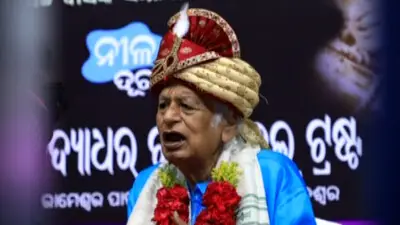Recommended Stories
The set of 12 books, brought out by Niyogi, contains five plays, as many poetry collections and two books of essays. They were translated by Tagore during the first and third decades of the 20th century at a time when Europe and America were reading everything written by him and were agog with the excitement of discovering an Eastern genius.
With the degradation of moral values in the Western civilisation and the spectre of another world war looming large before them, they looked up to Tagore as a possible saviour and felt moved by his vision of a unified universe.
Despite this topical allusion, the greatness of these books remains unchanged even after the lapse of a century and their appeal is as strong as ever. "It is, indeed, a great honour to pay tribute on the commemoration of the 150th Birthday of Gurudev by publishing 15 titles. I am honoured to get this opportunity to make this humble contribution in our efforts to spread the written words about his great works, around the world," Bikash D Niyogi, managing director of Niyogi Books, told PTI.
Along with three more books on the Nobel winner have been published to coincide with the birth anniversary celebrations. "A Pictorial Biography on Rabindranath Tagore" by Nityapriya Ghosh chronicles the poet`s contributions in the context of the period to which he belonged while "Tagore`s Paintings: Versification in Lines" by Sovon Som outlines the creative process behind Tagore`s experiments with ink and colour.
"Tagore`s Mystique of Dance" by Utpal K Banerjee examines, with archival images, three key hypotheses: What were the evolutionary features of Tagore`s dance-persona? What seminal cross-cultural liaisons did he undertake to arrive at the choreographic genre of Rabindra Nritya? And, what dance- vocabulary and literary content could be its imprimatur?
Tagore derived inspiration from diverse sources while articulating his ingenuity in the realm of visual, literary and performing arts. However, there always emerged an unmistakable fount of creativity of his own, expressed through Rabindra Nritya (Tagore`s dance).
The publishing house also has more titles on Tagore is in the pipe line - "Architecture of Santiniketan" by Samit Das, "Tagore Dance Drama Omnibus" by Utpal K Banerjee and "Songs of Tagore" by Aruna Chakraborty.
The 12 books set comprises "The King of the Dark chamber", "Fire Flies", "Fruit Gathering", "Gitanjali", "Malini", "Red Oleanders", "Religion of Man", "Sacrifice", "The Crescent Moon", "The Crown", "The Fugitive" and "Nationalism".
In "Religion of Man", Tagore writes, "Nations are kept apart not merely by international jealousy, but also by their karma, their own past, handicapped by the burden of the dead.
"They find it hard to think that the mentality which they fondly cultivated within the limits of a narrow past has no continuance in a wider future, they are never tired of uttering the blasphemy that warfare is eternal, that physical might has its inevitable right of moral cannibalism where the flesh is weak."
He says we in India are "unfortunate in not having the chance to give expression to the best in us in creating intimate relations with the powerful nations, whose preparations are all leading to an enormous waste of resources in a competition of brow-beating and bluff."












